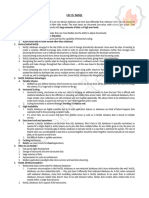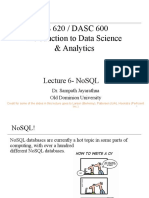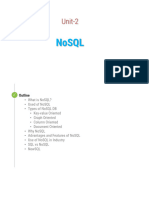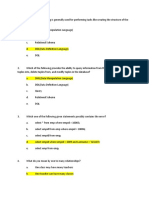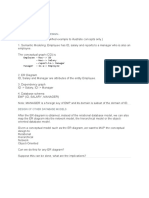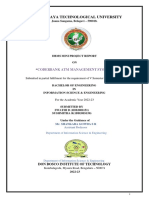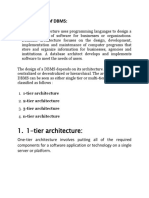0% found this document useful (0 votes)
40 views18 pages41 NoSQL Introduction
NoSQL databases are non-relational databases that store data in formats such as JSON, allowing for flexibility and scalability. They come in various types including document databases, key-value stores, wide-column databases, and graph databases, each with unique features suited for modern data management needs. NoSQL is particularly beneficial for applications requiring fast-paced development, handling large volumes of structured and semi-structured data, and supporting cloud and mobile environments.
Uploaded by
srajamouli21Copyright
© © All Rights Reserved
We take content rights seriously. If you suspect this is your content, claim it here.
Available Formats
Download as PDF, TXT or read online on Scribd
0% found this document useful (0 votes)
40 views18 pages41 NoSQL Introduction
NoSQL databases are non-relational databases that store data in formats such as JSON, allowing for flexibility and scalability. They come in various types including document databases, key-value stores, wide-column databases, and graph databases, each with unique features suited for modern data management needs. NoSQL is particularly beneficial for applications requiring fast-paced development, handling large volumes of structured and semi-structured data, and supporting cloud and mobile environments.
Uploaded by
srajamouli21Copyright
© © All Rights Reserved
We take content rights seriously. If you suspect this is your content, claim it here.
Available Formats
Download as PDF, TXT or read online on Scribd
/ 18

















